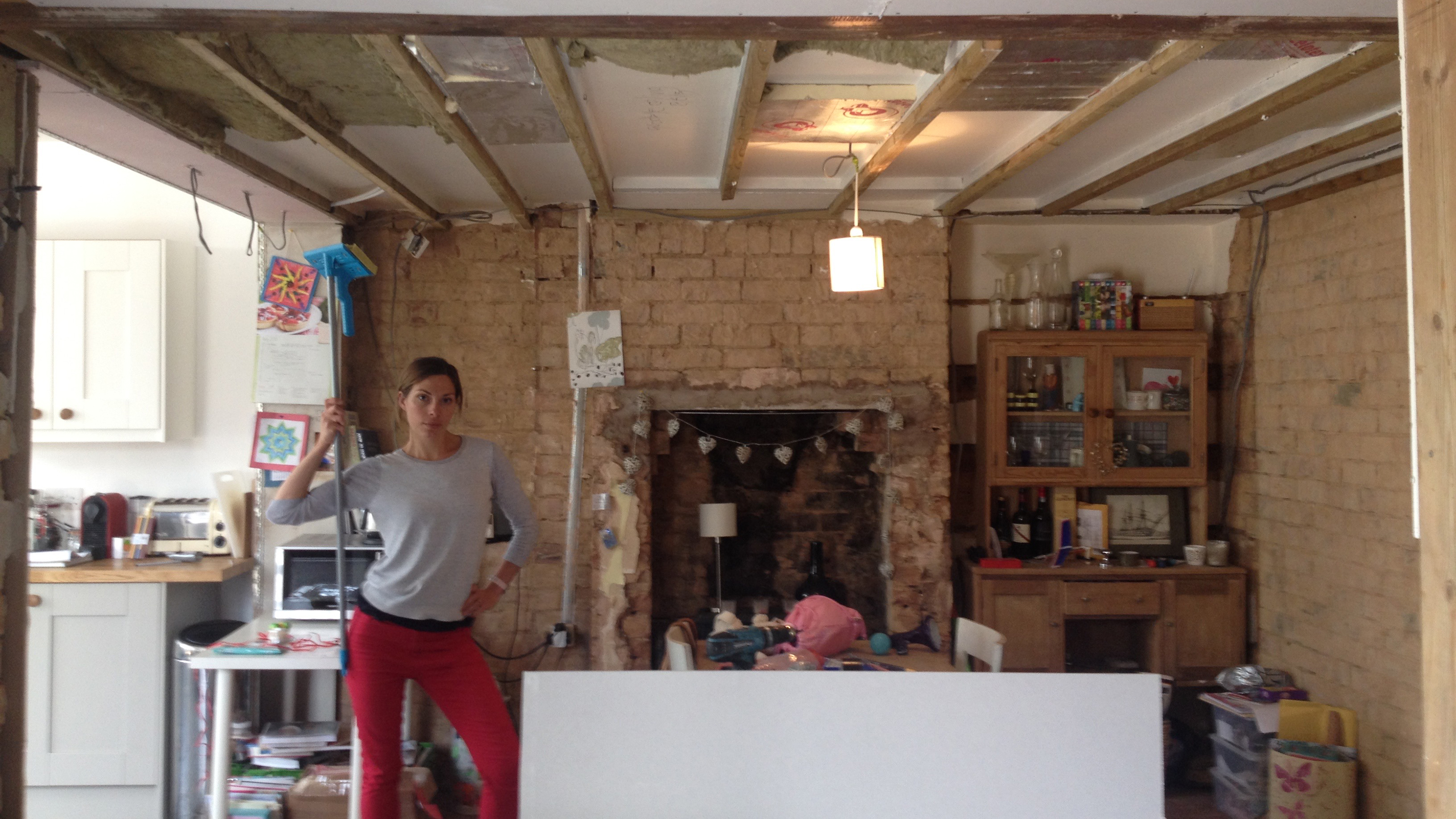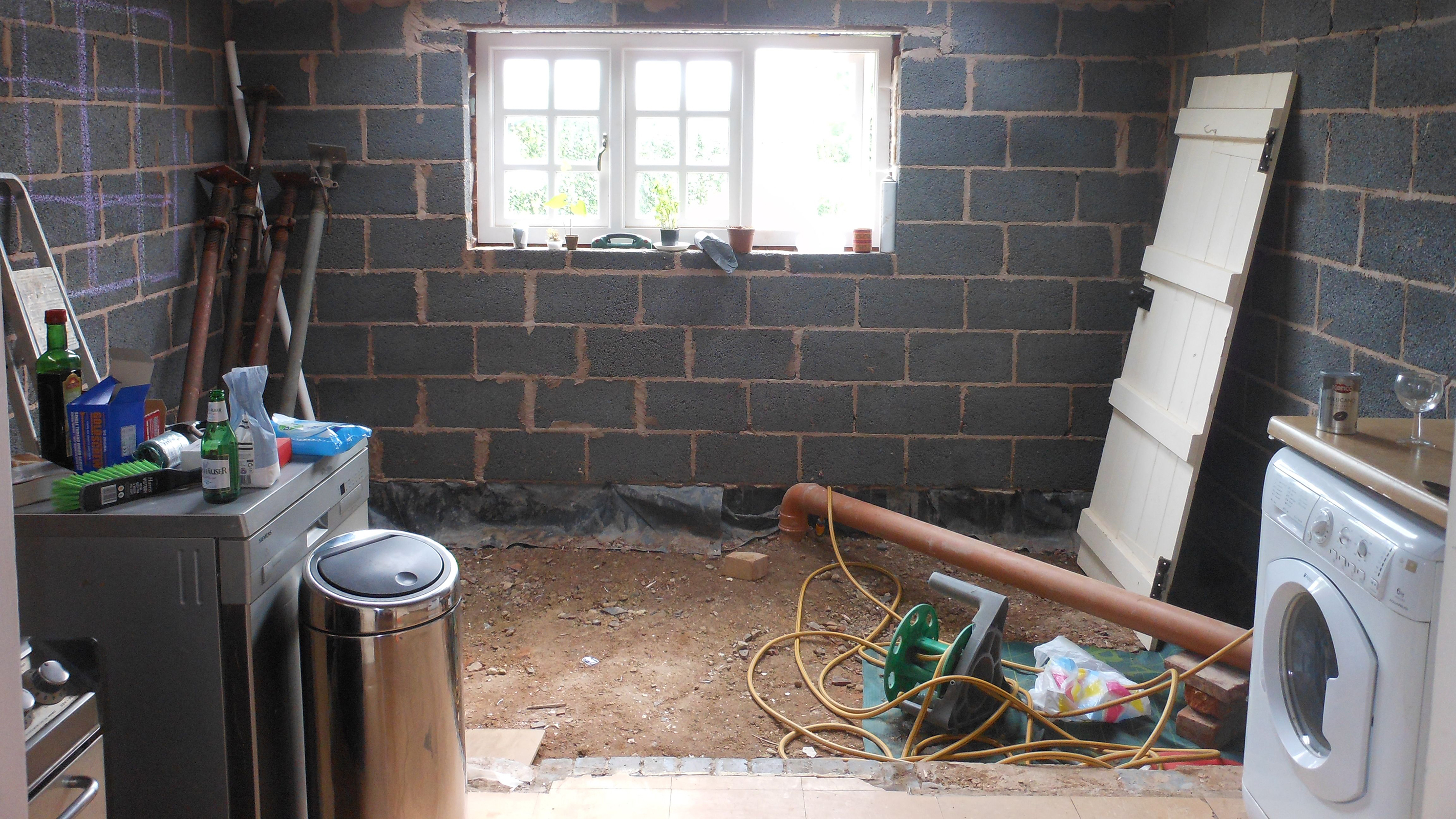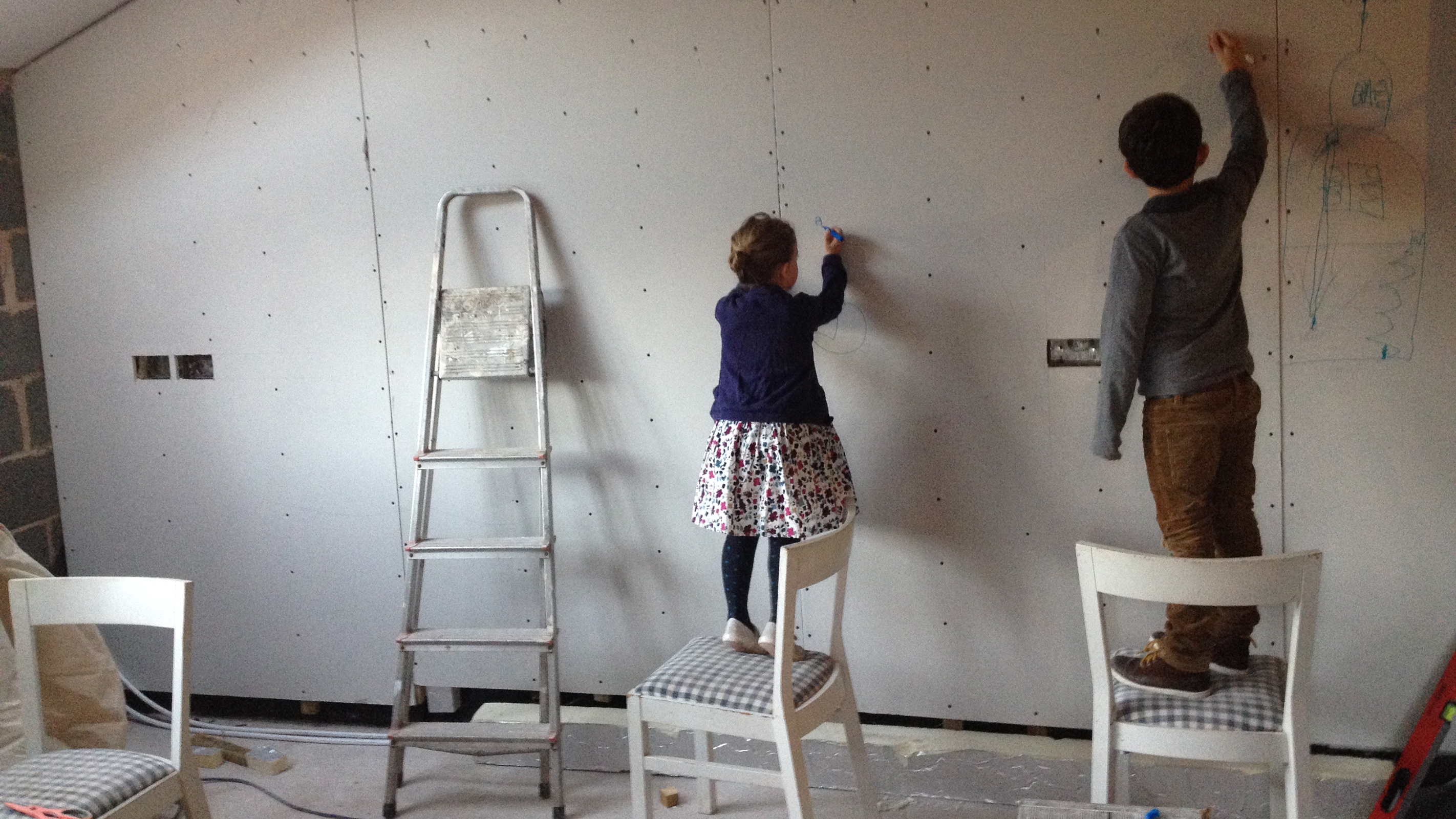How to Survive Living on Site While Renovating: Top Tips
Living on site while renovating has good and bad points — and for those on a budget is often the only option. Our Associate Editor offers her top survival tips

Living in a house renovation while it is still work in progress is most certainly not for the faint hearted. Having said that, it also has its upsides.
I have now been through the experience twice and have come out the other side armed with ideas on how, should we decide to renovate again and live on site, we can make it a little easier.
If you are renovating a house and, like we did, are considering toughing it out and living on site, there are several things you should know beforehand. Not only will preparing to live on site properly mean you know exactly what you are stepping into, but it should also mean you can put a few measures in place to make the whole experience a more pleasant one.
Here, I offer you my best advice for how to get through living in the midst of a renovation project and emerge unscathed, both mentally and physically.
Is it a Good Idea to Live on Site During a Renovation?
We lived on site, in our renovation project, for the entirety of our five-year project. While it would have been nice to have had the option of renting as work took place, on reflection I am not sure we would have done even if we weren't trying to keep a lid on our house renovation costs.
Living in the project meant we got to know the house so well, and I'm certain we wouldn't be as pleased with the end result if we hadn't been there to witness things like how the sun enters the property at different times of the day or become aware which spaces we tended to congregate in the most.
That said, we definitely weren't prepared for the toll it would take on all of us in varying degrees. The worst bits, and things you might want to consider before taking on this kind of project, were:
- There was no escape: Nowhere to go to get away from the mess, dirt and cold. We found this totally draining at times.
- The guilt: All the work that needed doing was there, just staring us in the face which made it hard to relax or enjoy days out.
- Our social life suffered: We couldn't have people over for dinner and the children couldn't have friends to play — we were basically living on a building site.
- The damp and the cold: It was constant — at one stage we had no roof and it was raining in the house while I tried to make packed lunches for the children. The floor was like a mud bath.

What are the Advantages of Living on Site During a Renovation?
Despite all of the above there were definitely some high points of living on site in our renovation.
The whole experience was one that the children look back on pretty fondly — being able to dig great big holes in the bare earth floor, and using the walls as their own personal art space, for example.
Of course, they also lamented the lack of sleepovers — not to mention the lack of attention they were getting from their parents.
With all this in mind, here are my top tips for living on site while renovating — I hope they help.

1. Make Storage a Priority
Before we extended, the house was really rather small. The kitchen had only one unit, a tiny sink, a single oven and a mini fridge. Elsewhere, there was a cramped dining space and a living room — not forgetting the sage green downstairs bathroom.
We'd been so excited about moving in that we didn't think where all our belongings were going to go — or what we would do with them once work on the house began. I remember the sense of panic I felt watching the removal firm bringing box after box into our house and seeing them stack up, filling up every inch of space we had.
What we should have done was arrange for our stuff to be stored elsewhere — a relative's garage, a shed or a storage facility would have done.
2. Create a Schedule of Works — And Stick to It
I've said it before, and I'll say it again — a good schedule works is key to a happy renovation project. It will tell you what is happening and when and allow you to prepare yourself for the more disruptive jobs, both mentally and from a practical point of view.
If we had have followed this advice we would have sought out childcare during the more disruptive parts of the project, such as when we were screeding the ground floor and knocking down internal walls.
We could also have planned to decamp during certain periods in the renovation.
3. Plan Around the Weather
Which brings me nicely on to this next point. Avoid tackling tasks that will leave your home exposed to the elements in the depths of winter.
We also found that being able to sit in the garden for meals or to let the children outside to play made a huge difference to how we felt about the project when there was no real space to sit inside to eat or play.
4. Take a Break From Time to Time
We used to feel so guilty at weekends or in the evenings if we were doing anything but working on the house, as this was often when the bulk of the progress would happen.
However, when we did take time away to see friends or have a family day out, we all returned feeling refreshed, energised and it did our motivation the world of good.
5. Keep One Room Clutter Free
There were times when it felt like there was no escape from the mess, noise and dirt. I used to be a regular in our local coffee shop where I would sit, working in a corner, trying to make my third cup of coffee last longer than the first two — I also got a fair few parking tickets.
In hindsight, it would have been wise to take a look at garden offices and perhaps have constructed one before work began.
It was also hard to relax in the evenings or for the children to play indoors. Aim to plan so that you always have one room clear of dirt and rubble so you have some solace.
6. Have a Decamping Plan
There will be times when having no roof, no floor, no walls, no water, no power just gets to be too much. Have a sanctuary with friends or family on hand for these times. Once again, a schedule of works will help you plan ahead for this.
7. Create a Nice Outdoors Space
When we moved in, our garden was completely given over to spiky fruit bushes — nothing more than a thorny maze,
We cleared all this while we came up with designs and applied for planning permission for our extension. This was a great idea as it meant we had somewhere to escape (when the weather allowed) and that the children could play out there safely too.
8. Always Have a Bathroom
If you plan on moving a bathroom, or to rip out and replace an existing one, make sure that you always have somewhere to wash and go to the toilet.
Keep the old bathroom functional for as long as possible, get the new one up and running as soon as is practical and plan alternatives in advance. Hauling kids to the leisure centre for a shower is no fun — but it is marginally better than relying on the garden hose...
Get the Homebuilding & Renovating Newsletter
Bring your dream home to life with expert advice, how to guides and design inspiration. Sign up for our newsletter and get two free tickets to a Homebuilding & Renovating Show near you.
Natasha was Homebuilding & Renovating’s Associate Content Editor and was a member of the Homebuilding team for over two decades. In her role on Homebuilding & Renovating she imparted her knowledge on a wide range of renovation topics, from window condensation to renovating bathrooms, to removing walls and adding an extension. She continues to write for Homebuilding on these topics, and more. An experienced journalist and renovation expert, she also writes for a number of other homes titles, including Homes & Gardens and Ideal Homes. Over the years Natasha has renovated and carried out a side extension to a Victorian terrace. She is currently living in the rural Edwardian cottage she renovated and extended on a largely DIY basis, living on site for the duration of the project.

